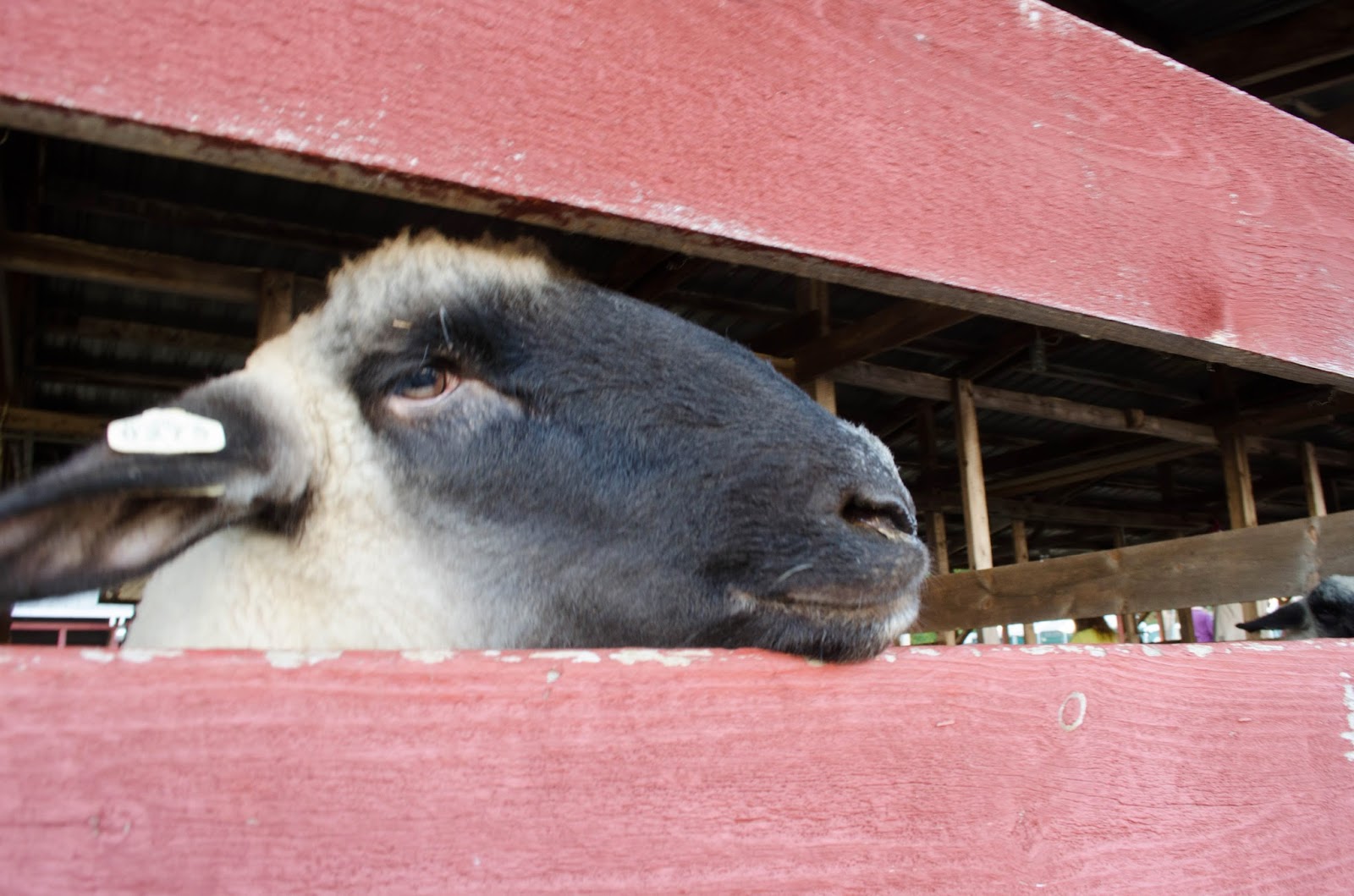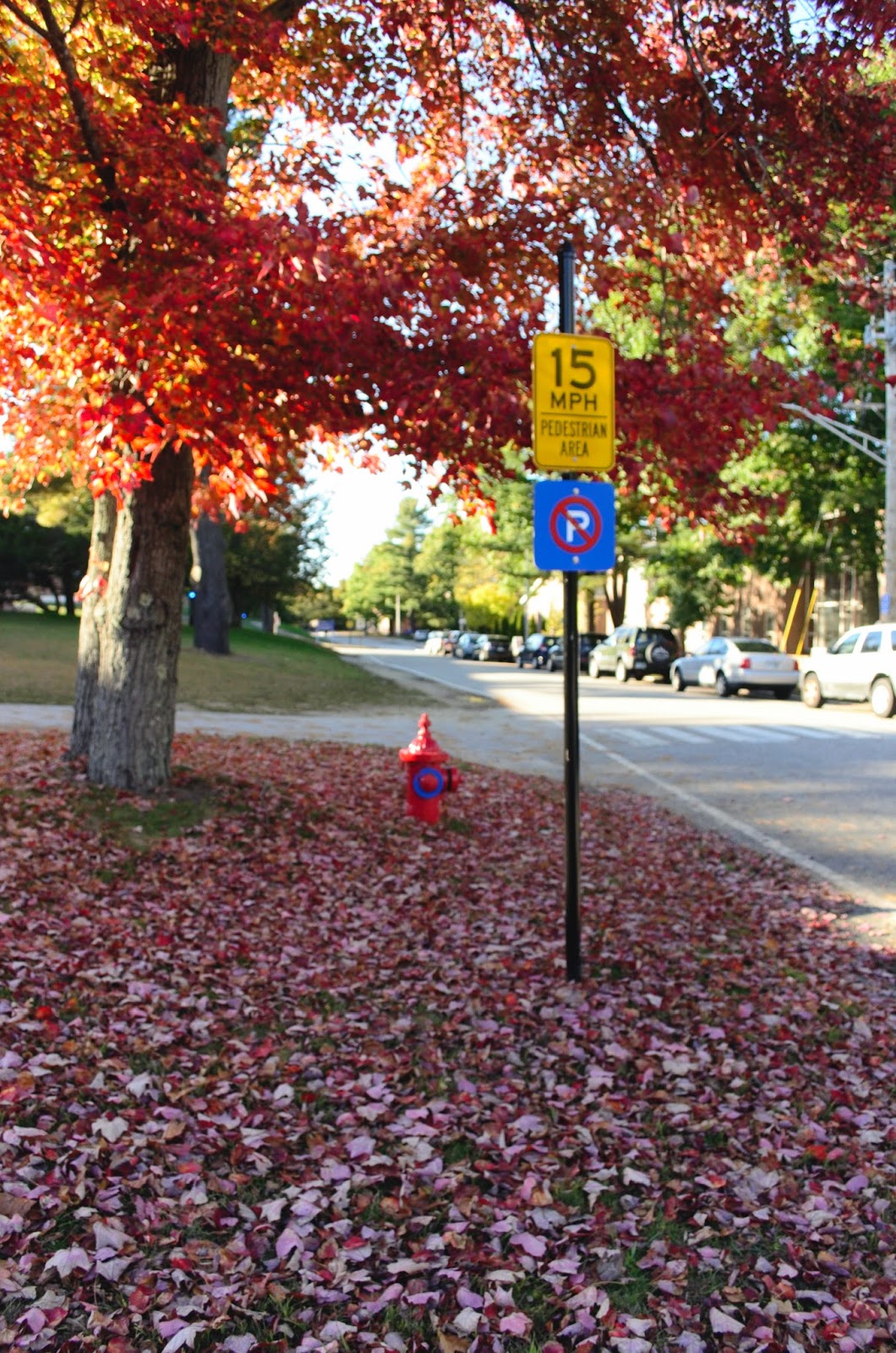My intention for this project was to wander parts of my home town that I rarely frequent. What I ended up noticing was a very striking contrast of bright points of nature among a run-down, darker man-made environment. I found this contrast everywhere and let it become my motif for the shoot. As a result, I ended up with a collection of photos that were a lot darker and grittier than what I normally choose to shoot. The overcast environment, I found, gave the pictures a lonely and haunting quality that I am extremely happy with as a result. While I used to only focus on nature photography, I am eager to continue to capture a blending of the natural and the man-made.
Wednesday, October 29, 2014
Wednesday, October 22, 2014
Monday, October 20, 2014
Saturday, October 18, 2014
Reading Response: Chapter 5
The Chapter 5 reading on “Editing an Image” was my favorite reading
thus far. While I know my way around some of the tools in editing programs, I
enjoyed going more in-depth into some tools that are essential to getting a
good print. I appreciated the section of the chapter dedicated to curves, as I
have found that to be the tool that I have used the most when editing a
photograph. In the past, I have just moved the curve at random to eventually
achieve the contrast of light and shadows that I desire. This chapter, however,
helped to give me an understanding of how the curve works and how it relates to
the image I am editing. For instance, I now know that the steeper the curve,
the higher the contrast is in the picture. The chapter also showed how you can
alter different curves to effect either the overall print or just a specific
RGB layer.
One
useful tip that the chapter provided that I had never realized before is that
you can select just a part of the image to alter it. The reading provided a
great example of a picture in which a piece of pottery (of a white bird) was
lightened so that it came out pure white, rather than gray. All the while, the
rest of the image was not lightened so that the image didn’t become so washed
out. By being able to alter certain aspects of the image while leaving others
as they are (or altering them differently) the photographer has even more
control over the finished product that is his/her printed photo.
Another great tip that I need to remember to do is to start
your editing process by making the image the shape you want it to be. Cropping
the image should come first, because that is when you decide which parts of the
image are important to you. Following that is when you can adjust elements of
the image. It doesn’t make sense to work on making adjustments to an image in
which you may eventually be cropping a significant amount of.
My only question in regards to the article is when it
suggests you save a copy of the image and make sure that it is the copy that
you edit, so as to preserve an original version of the photo. I wonder if this
chapter was written pre-the concept of non-destructive editing in which the
information of the original image is always in the edited version and can
always be switched back to.
Reading Response: Chapter 4
The chapter on the “Digital Darkroom” was the most difficult
chapter to get through so far. Early on in the chapter was a diagram of a
computer and all the various items that are utilized in a digital workstation.
While the descriptions of the technology may be useful for someone with little
to no experience with working with computers and editing software, I found the
material to be extremely dull and it did not present me with any new
information. That being said, there were some parts of the chapter that had a
lot of interesting new information to offer.
For
instance, while I am familiar with some of the digital file types that were
listed (.jpeg, .psd, .tiff) I had no experience or knowledge of .dng or .NEF.
Prior to reading this article, I never understood why my SD card had two
versions of each picture when I opened it on my home computer. Not knowing what
the .NEF was, I always worked with the .jpeg files because it was what I was
familiar with. Now I know that the .NEF file is the RAW image and will
therefore give me more digital information to work with in the edit process.
Another
bit of information from the chapter, while not exactly useful as I don’t
believe I will ever get a chance to delve into darkroom photography, is that a
single color image is made up of several black and white versions of the image.
It is by adding or subtracting colors that the photographers are able to create
a color print.
Overall,
I think the article had a wealth of information in it, but it tried to pack in
a LOT. It seemed as if was intending for it’s audience to be a mix of
individuals completely new to the editing process all the way up to people who
know quite a bit and are just looking to go a little more in-depth. It was a
lot to be hit with in one reading, but there was certainly a lot to learn from!
Wednesday, October 15, 2014
Reading Response: Chapter 3
The beginning of chapter 3 on light had me initially worried. On the first page, there was a diagram of the light spectrum. Not being a science-oriented person, I was prepared to fumble through the reading, knowing I would probably have to re-read many sections and that I still wouldn’t get all the information I needed out of the reading. I was pleasantly surprised, however, when the reading touched upon something that I am extremely familiar with and actually deal with on a regular basis.
For the last 3+ years, I have worked in a Staples Copy & Print Center. Although most of my print knowledge stems around business digital printing, we do also print wide format color prints (ie: photos, banners, posters, etc). So I greatly appreciated the part of the reading where it talked about resolution of an image and the authors stated, “Resolution measures the fineness of an image, but resolution goes down when size goes up” (London, 53). My coworkers and I constantly struggle with getting people to understand this concept of resolution. Very often what I experience is customers coming to me with a picture they took on their smart phone that they love and want to make into a large poster. With apps like Instagram, everyone with a camera phone thinks they know all there is to know about being a great photographer. No matter how hard you try to explain to a customer that their tiny Instagram photo will look pixelated as a 2’x3’ poster, most people think they know better and say to go ahead with the order anyway. Then it is often a nightmare trying to deal with an irate customer who doesn’t know why we did such an awful job and that their print looks like a bunch of squares all over the page.
Because of some of the printing background that I already have, I believe it’s important for people studying photography to remember that what they see on the screen of their camera will not transfer perfectly onto a printed page. There are so many factors to be accounted for and that to be a good photographer, you also need to study printing and know how to troubleshoot when things go wrong (which they almost always will!).
Reading Response: Chapter 2
The chapter on lenses was extremely helpful in understanding different aspects of my camera lens and also the different options that are out there for lenses. What I didn’t like, however, were the first two paragraphs that introduced the topic. These paragraphs, rather than delving right into talking about topics that would be applicable to my interests in camera lenses, it discussed the ways that you could create a lens from a box and a magnifying glass. Although that is an interesting odd fact, it is not particularly useful to the reader.
Thankfully, the rest of the chapter is extremely useful for those who are looking to get the most out of their lens and to expand on their knowledge of photography. The first part of the chapter discussed focal length and how this affects the angle of view (ie: how much of the scene is actually captured on camera) as well as the magnification of the shot (how large the objects in the frame appear). What I highlighted to remember for my personal knowledge is that the shorter the focal length, the more of the scene there will be in the frame and the smaller the objects will appear. I believe if that thought is kept in mind, then how focal length works can easily be remembered.
The one section of the article that I had trouble grasping initially was when they talked about lens speed. Not to be confused with shutter speed, lens speed actually has more to do with aperture and how much light can be seen in the lens. The faster the lens speed, the more light and it will be better in dim settings or with a faster shutter speed. By calling it lens SPEED, it can get difficult keeping it separate in your mind from shutter speed. Unfortunately, it’s one of those useful tips that will just have to be memorized if it doesn’t seem to logically make sense at first.
My favorite part of the chapter was the series of images on page 31 to help display the differences in focal lengths. I have two lenses for my Nikon d5100. I have my 18-55mm lens that came with my camera. I also have a 55mm-200mm lens. My 55-200mm lens is fairly new and so the examples in the chapter that showed how close or far away the same scene looked depending on the focal length helped to show the range my camera is now capable of with the two lenses.
Portraiture
For our first project of the semester, we had to focus on different styles of portrait photography. My first photo (top) is a candid portrait. It is meant to be an intimate moment between father and son that is forever frozen in time in print (and on screen!). My second photograph calls into question the definition of a portrait. Despite this not being a true portrait of my grandmother's likeness, the image displays aspects of her character and also how loved she was. The next three portraits are centered around one of my favorite types of photography and that is animals! I love being able to capture images of living creatures that are incapable of understanding a photographers wishes/instructions. For me, photographing animals is a challenge and being able to capture decisive moments of living creatures is extremely gratifying. The last picture derived from the experience I have gained as I have dabbled in photography. My younger brother has been an athlete his entire life and for the last few years I have gained a lot of hands on experience from photographing his various sports games. Each sport comes with it's own challenges in order to gain great pictures and I love the feeling I experience when I get a particularly good shot of athletes in motion. I particularly liked the way this photograph looked like it was old football film reels and with very little editing, I was able to draw out more of the particular look to the image.
Monday, October 13, 2014
Wednesday, October 8, 2014
Sunday, October 5, 2014
Subscribe to:
Comments (Atom)

















































